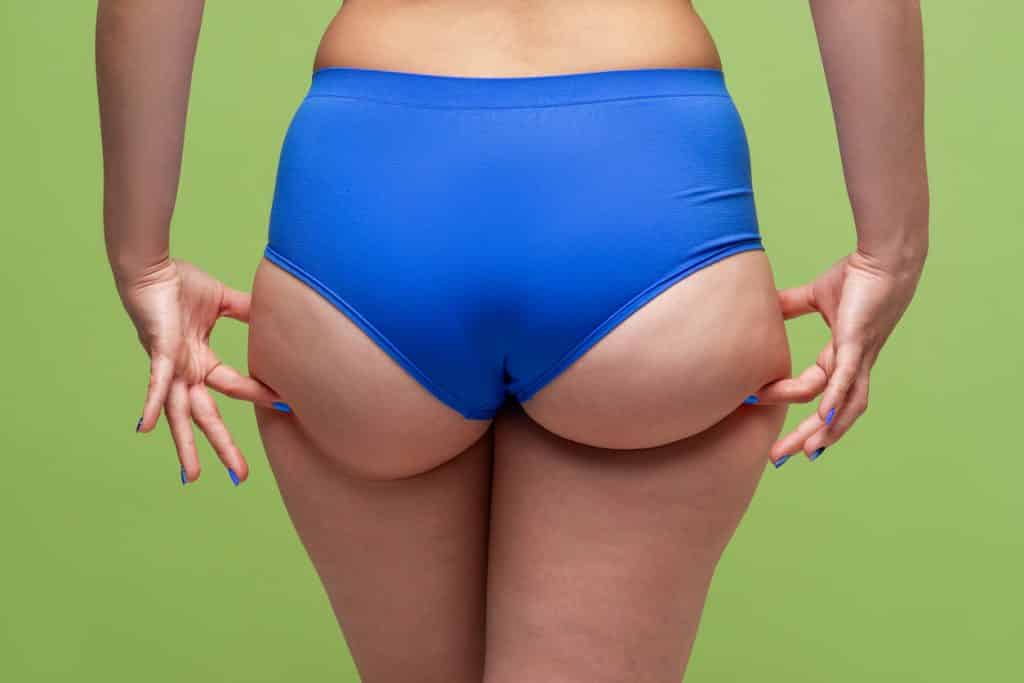Many people suffer from hip pain at some point in their lives. There are many different causes of this pain, ranging from injuries to arthritis.
However, one common factor is that hip pain often flares up when we are lying in bed. This is because spending long periods of time in the same position can cause fluid to accumulate in the joints, leading to swelling and stiffness.
If you are not in a good position while you sleep, you may also put pressure on your sore hip or cause your hips to get out of alignment. These things can make existing nighttime pain worse.
If you have big hips, you may find it difficult to sleep in certain positions. This is because your hips might sink into your mattress differently from people with smaller hips and cause your body to misalign during the night.
The best sleeping position for bigger hips is on your side with a pillow between your knees. This will take the pressure off your hips and allow you to sleep more comfortably.
Sleeping in a certain position will not make your hips grow bigger on its own, but some positions are better for your hips and butt than others. Read on for more info.
If you have hip pain, it is important to find a position that relieves pressure on your hips and does not cause you any additional pain. Sleeping on your side with a pillow between your knees is often the best way to achieve this. You can also try stretching or doing other exercises before bedtime to keep your hips loose and prevent stiffness. By taking these steps, you can help minimize hip pain and get a better night’s sleep.

Does your sleeping position affect your hips?
The position you sleep in can have a big impact on your hips. If you don’t sleep in the right position, it can lead to hip pain or make existing hip pain worse.
Sleeping in the wrong position can throw out your spinal alignment and lead to increased pressure on your back and hips. Eventually this can lead to back pain and even to spinal problems.
You should always aim to achieve a neutral spine position during sleep to prevent any discomfort.
You may also want to check out our post: Does sleeping on your stomach make your butt bigger?
What is the best sleeping position for bigger hips?
The best sleeping positions for people with bigger hips are on your side or on your back.
The goal with your sleeping posture is to keep a natural alignment through your spine. For some people, this will involve sleeping on their back, possibly with knees slightly bent, whilst for others it will involve sleeping on your side.
Unfortunately for stomach sleepers, this is not great for people with bigger hips as it makes the spine rotate and misalign. Those with wider hips will find this rotation to be more pronounced.
Side sleeping or fetal position
Sleeping on your side, or in the fetal position, tends to be the best for keeping your spine in a neutral position.
If you have wider than average hips a softer mattress may allow you to sleep more comfortably than a firmer mattress, as your hips will be able to sink deeper into the mattress when you lie on your side.
For additional comfort, lie on your side with your legs bent and then place a soft, flat pillow between your knees. This should reduce any remaining pressure on your hips.
If you do choose to sleep on your side then you should alternate which side you sleep on each night. This helps prevent any changes in face shape from sleeping on your side.
See also: Can you sleep on your side with a weighted blanket?
Sleeping on your back
If you find it more comfortable to sleep on your back, and you have larger hips, you might find that you need some extra support under your lower back to allow for your body shape whilst still maintaining a neutral spine.
A wedge shaped pillow is a great option for this, but you can try using a rolled up towel to see if this helps before investing in a special pillow.
A supportive mattress, such as a good quality memory foam mattress, can also help if you have big hips and like to sleep on your back. The weight of your hips will sink into the memory foam whilst your back will stay in a neutral position.
Alternatively, if you have a firm mattress, sleeping with your legs slightly bent at the knees and your feet flat, with a small pillow under your knees, may offer more support for your hips.
See also, pros and cons of sleeping with your legs elevated.
Sleep positions to relieve hip pain
If you find you suffer from hip pain at night or when you wake up, changing your sleep position might help.
Sleeping on your side with a pillow between your knees can help to take the pressure off your hips and reduce pain. If you don’t have a pillow that is big enough, you can try using a rolled up towel instead.
If you find that sleeping on your back makes your hip pain worse, raising your legs to a bent position and placing a pillow under your knees can help to relieve the pressure on your hips. You might also want to try placing a small, rolled up towel under your lower back for additional support.
Whilst there is no one perfect sleep position that will work for everyone, these positions can help to reduce hip pain. It is important to experiment and find the position that is most comfortable for you.
Can you grow your hips in your sleep?
You can’t actually grow your hips in your sleep. How big your hips are is all about your body composition, your body fat distribution and your muscle mass. If you want to make your hips look bigger you can work on your glutes (your butt muscles) by doing squats and other butt toning exercises that will give you a rounder shape.
Of course, the better quality sleep you get will help your health generally and will also help you to gain the most benefit out of any exercise you do.
Read also: Can you sleep with a waist trainer on?
Sleep position to get bigger hips
There is no particular sleep position that helps you get bigger hips. As we’ve mentioned, how big your hips are is all about your body composition and you can’t change that by sleeping in a certain position.
What you can do though is make sure you get enough good quality sleep so that you’re well rested and have the energy to exercise regularly. Exercise is essential if you want to tone your muscles and improve your body shape.
As well as exercise, eating a healthy diet is also important for overall health and wellbeing. A balanced diet will help you to maintain a healthy weight and have enough energy to work out.
So, there is no one sleep position that will help you get bigger hips but making sure you get enough good quality sleep.
Does sleeping on your back make your hips wider?
No, sleeping on your back doesn’t make your hips wider. We have also researched this and found that sleeping on your back does not make your butt flatter either.
If you think that sleeping on your back or your stomach makes your bum bigger then you are wrong on this one too – it makes absolutely no difference!
Does sleeping on your side cause hip dips?
Hip dips are natural indents that some people have on the side of their hips. They are more common in women than men and are often genetic.
Sleeping on your side will not cause hip dips but if you already have them, they may be more pronounced when you sleep on your side. This is because when you sleep on your side, all your weight is on your hips and they sink into the mattress more. This is only an issue while you are actually lying down though, as your sleep position won’t have any impact on your hip dips in the long term.
If you have hip dips and want to make them less noticeable, you can try wearing wider pants or dresses that will balance out your hips. Or, you could try doing some exercises that target the muscles around your hip area.
Conclusion: Best sleeping position for bigger hips
There is no one size fits all answer when it comes to the best sleep position for bigger hips. It depends on your individual body composition and what is most comfortable for you.
Sleeping on your side with a pillow between your knees can help to take the pressure off your hips and reduce pain.
If you find that sleeping on your back makes your hip pain worse, raising your legs to a bent position and placing a pillow under your knees can help to relieve the pressure on your hips. You might also want to try placing a small, rolled up towel under your lower back for additional support. Experiment and find the position that is most comfortable for you.
